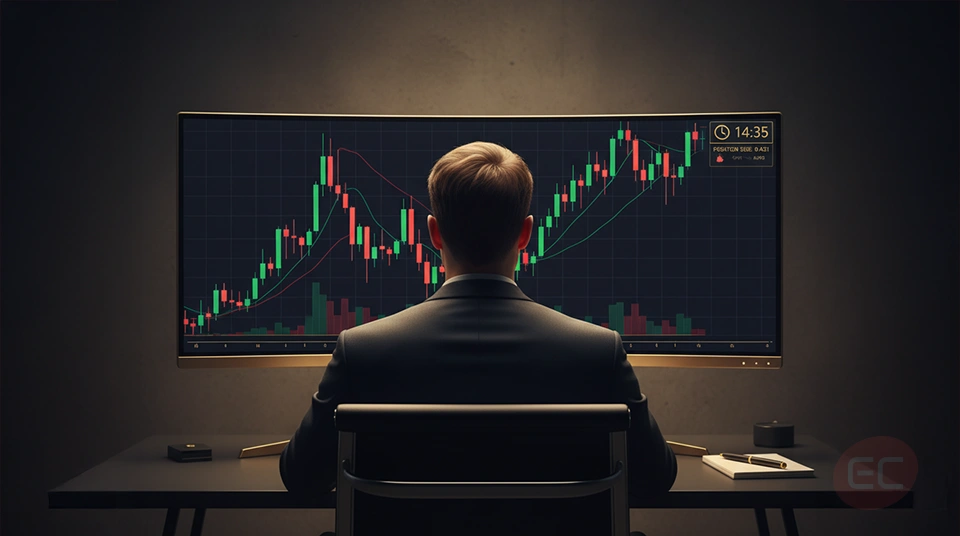Trading Styles: Scalping, Day, Swing, Position, which one fits you the best?
When it comes to trading styles there’s no one size fits all approach. Some traders prefer a fast paced environment and others generally prefer a slower, more long-term style. Choosing the right method depends a lot on your personality, your time availability and your risk tolerance - especially if you’ve ever wondered what is scalping in trading or how it compares to slower methods. So how do you decide which style to choose? Don’t worry, in this course, we are going to explore the four major trading styles: scalping trading, day trading for beginners, swing trading and position trading, so that you can make an informed decision on which trading style fits you the best.
We are going to answer common questions like 'what is scalping in trading?', 'what is day trading?' and 'what is positional trading?' while also narrowing down what is swing trading vs day trading so you can compare and choose one confidently.
So let’s get started!
What is Scalping in Trading and is it right for you?

Let’s start with one of the most fast paced styles, a favourite amongst many traders: scalping trading. So, what is scalping in trading exactly? Scalping trading is especially a method where traders make dozens, or even sometimes hundreds of small trades every single day. The goal with scalping trading is to capture very small price movements in a short time frame, usually within seconds or minutes. Although scalping trading works for a lot of traders, it’s definitely not for everyone. Scalping traders usually need to have quick decision-making skills, laser focus and strong discipline. Understanding what is scalping in trading provides a strong foundation for anyone wanting to trade in highly liquid markets.
But here's the catch, scalping trading requires a lot of time and more importantly, a lot of attention. Before committing to it, make sure you truly understand what is scalping in trading and the level of focus it requires. If you’re not prepared to sit in front of the screen for hours or if you don’t handle stress very well, then it might not be your best option.
If you’re still wondering what is scalping in trading used for? It’s most often favoured in highly liquid markets like forex or futures, where the price moves quickly and often. It's a tough trading style to follow and it’s not for the faint hearted, but for some traders, the speed and action are exactly what they’re looking for and they make it work. Once you master what is scalping in trading, you’ll realise how powerful small, consistent profits can be.
Now that we’ve covered scalping trading, let’s look at another fast moving trading style: what is day trading for beginners.
What is Day Trading?
What is day trading exactly? Well, following its name, day trading is the practice of opening and closing all positions within the same trading day. This definition of what is day trading highlights the focus on intraday opportunities, where traders seek to profit from short-lived price movements rather than long-term trends. In other words, you don’t keep your trades open overnight. You might be wondering, how does day trading for beginners compare to scalping? Well, with day trading you might take fewer trades than a scalper, maybe around 2 to 5 per day. The holding time could also range from several minutes to a few hours and you still need to be active during the trading session. This intraday approach forms the core concept behind day trading for beginners, where all trades are opened and closed within the same day.
Day trading for beginners just starting out is usually the 'go-to' style as it provides quick feedback and it can teach you the market mechanics quickly without the short timeframe stress of scalping trading. Many traders start by asking what is day trading and end up discovering how this fast-paced style helps them grow in discipline and skill.
You’ll start to realise that as you explore what is day trading, you’ll understand that discipline and emotional control is everything, because with day trading, you're managing risk, following a system and staying calm during unexpected volatility in the market.
Contrary to investing, where time is on your side and the pressure isn’t as high, day trading for beginners means making decisions based on intraday patterns, momentum and volatility.

What is Swing Trading?
So what if you’re not prepared to sit in front of the screen all day? Then what? Well, that’s where swing trading comes in. So let’s first answer the big question. What is swing trading?
Swing trading is about capturing short to medium term movement, generally lasting from a couple of days to a couple of weeks. With swing trading, you’re holding trades overnight, but not for months on end. The idea is to profit from swings in the price, larger swings than intraday moves, but not long-term trends.
When you compare it to day trading for beginners, swing trading offers you more flexibility. With swing trading you don’t actually need to monitor the markets every single minute. Instead, you can narrow it down to analysing the markets in the evening, placing your orders and letting the trade play out over time.
This style is great for people who work full time jobs, because unlike scalping trading, you’re not relying on micro-movements, instead, you’re aiming for bigger and more meaningful price shifts.
Understanding the main difference between what is swing trading vs day trading is critical. Because the key difference is time. Day trading for beginners requires closing all trades within a day and swing trading allows trades to evolve over days or even sometimes over weeks.
What is Swing Trading vs Day Trading?
Now that you understand the theory, let’s look at a comparison table that clearly shows what is swing trading vs day trading:
| Criteria | Day Trading | Swing Trading |
| Timeframe | Minutes to Hours | Days to Weeks |
| Holding Period | No overnight trades | Holds positions overnight |
| Trade Frequency | Multiple trades daily | Fewer trades per week |
| Market Monitoring | High | Moderate |
| Suitable For | Active, full-time traders | Part-time or evening traders |
Now that you’ve seen the table, the concept of what is swing trading vs day trading should make more sense. Both trading styles require skill and discipline but cater to very different personalities. Some traders thrive on the fast feedback of day trading, while others prefer the slower rhythm and analytical depth that swing trading provides. Evaluating what is swing trading vs day trading through your own experience is the best way to find the balance between speed and strategy. Having a good understanding of what is swing trading vs day trading is not necessarily about choosing one forever, but about learning how both can coexist in your overall trading approach.
What is Positional Trading?
Now that we’ve covered multiple trading styles, let’s look at the slowest and most strategic style: position trading. What is positional trading? Position trading is a long term approach where traders usually hold positions for weeks, months or even sometimes years. With positional trading, you’re more focused on major market trends and macroeconomic factors, not just short term fluctuations. To fully understand what is positional trading, think of it as the opposite of scalping or day trading. Instead of reacting to every tick, positional traders rely on broader economic factors, patterns and indicators that play out over time. Learning what is positional trading lets traders appreciate how economic events, central bank policies and company fundamentals shape price trends that last far beyond a single trading session.
So if you're someone who believes more in the ‘big picture’ movement and you prefer minimal screen time, position trading could be great for you!
As opposed to scalping trading, which can often involve dozens of trades per day, position trading can often involve just a few trades per year. With position trading, it requires deep analysis, position sizing, patience and a good understanding of the market cycles. A key part of learning what is positional trading is developing patience and emotional control, since trades can take weeks to unfold. This perspective on what is positional trading highlights its reliance on patience, discipline and confidence in long-term analysis. So when we ask what is positional trading, what we’re really asking is: are you comfortable with slow trades, wide stops and delayed gratification? If the answer is yes, then position trading might just be your style.
Matching your Lifestyle with your Trading Style
Let’s be honest, there isn’t one trading style that is better than the others. The key is actually to find the one that fits your lifestyle, your personality and your risk appetite. Once you decide what kind of trader you want to be, you can decide on a trading style that works for you. So when you’re deciding on a trading style, ask yourself these questions:
- How much time can you realistically dedicate to trading?
- Are you calm under pressure or do you prefer a slower pace?
- Do you prefer short term excitement or do you prefer long term strategy?
The answers you give to these questions will help you align your method with your strengths. If you're the type of person who is more impulsive and you love quick results, then scalping trading might just be a good match. If you're more methodical and patient, then position trading could be better suited for you. Revisiting what is swing trading vs day trading can also help you refine your long-term goals. Maybe you start as a day trader to build confidence and later transition into swing trading for flexibility.
Conclusion - Trading Styles: Scalping, Day, Swing, Position
So whether you’re researching what is scalping in trading, what is day trading, exploring the differences between what is swing trading vs day trading or learning about what is position trading, choosing your trading style is one of the most important decisions you’ll make as a trader, especially when you’re just getting started. It affects everything, from how you plan your day, how you manage your risk and how you evaluate success. So whether you’re researching what is day trading for beginners, trying out with scalping trading, or just exploring what is positional trading, remember that consistency comes from alignment. Find a style that works for you, test it out and stick to it!
Are you ready for the next trading course? Then keep on reading the EC Markets Academy as we explore plenty of new trading topics that every single trader needs to know! See you at the next course!